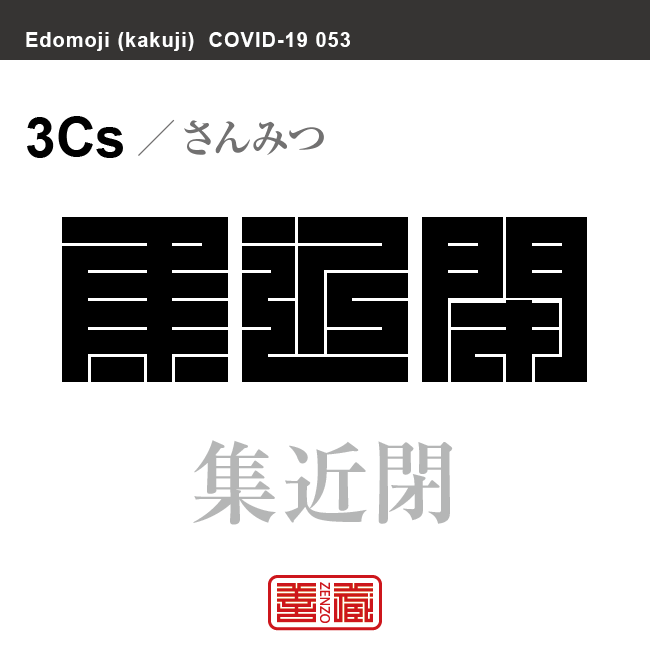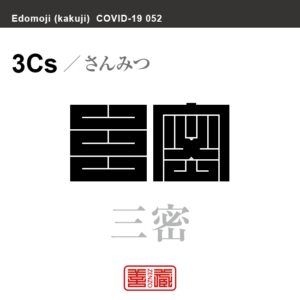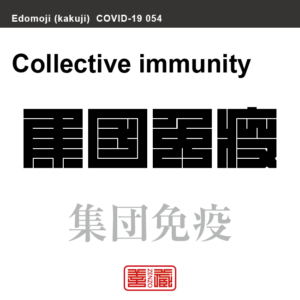集近閉 しゅうきんぺい 角字で新型コロナウイルス感染症関連用語、漢字表記

集近閉
しゅうきんぺい
Avoid gathering, proximity, closure
Unicode: [集_0x96C6][近_0x8FD1][閉_0x9589]
新型コロナウイルスの感染拡大を防ぐために、個人が避けるべき3密(密集、密接、密閉)を、「集合」「近接」「閉鎖」として表現し直したもの。
・換気の悪い「密閉」空間
・多数が集まる「密集」場所
・間近で会話や発声をする「密接」場面の3つを避けるという意味です。
「しゅうきんぺい」または「しゅうきんへい」と読むとされ、中国の国家主席をもじった言葉とも言われています。
角字とは?
江戸時代に誕生した角字は、正方形のグリッド内にほぼ水平・垂直のラインのみで文字(漢字)が表現されるグラフィックアートです。
正方形という限られた空間の中に、あらゆる文字を閉じ込めようとするグラフィックデザインは、前述した、ミニマムな物に対する日本人特有のこだわりが随所に感じられます。
そのシンプルで有りながら、奥深い「角字」は多くの日本人を魅了し、お祭りで着る半被や印半纏(しるしばんてん)と言われる着物や、商標、印鑑、家紋、看板デザインなどに今日まで数多く使用されてきました。
What is Kakuji?
There is a style of penmanship called “Kakuji” in Japan. Edo-born Kakuji is a graphicart that expresses letters (kanji) with almost horizontal and vertical lines only.
The design which bases on many straight lines seems simple, or too plain even at its first glance; yet this beautiful artistic penmanship that encompasses the aesthetic of the Japanese in the Edo era, also known as “Iki”, and playfulness has long been inherited to this day, thanks to the masteries’ long years of efforts in training and refinement.
Kakuji with its simplicity and depth is used for designs such as trademark, hanko stamp, family crest and signboard.































































 2文字コード:MZ 3文字コード:MOZ 数字:508 ITU:258 ccTLD:.mz
2文字コード:MZ 3文字コード:MOZ 数字:508 ITU:258 ccTLD:.mz







































































































































